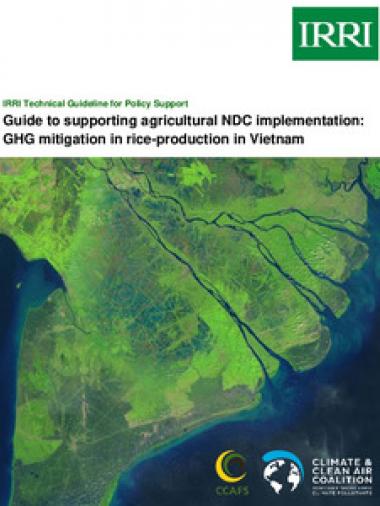Guide to supporting agricultural NDC implementation: GHG mitigation in rice-production in Vietnam

Efforts to reduce GHG emissions from rice production are a national priority for achieving Vietnam’s nationally determined contributions (NDCs). Unlike the livestock industry where the animal itself is responsible for the majority of emissions, in rice production it is not the plant per se that is the culprit of GHG production, rather it is the way in which the crop is grown and managed that makes a difference in the amount of GHGs emitted. The single largest factor influencing the amount of GHG emitted from rice production is the management of water. The process of alternating between wet periods and dry periods during rice production is herein referred to as alternate wetting and drying (AWD) which has been proven to reduce GHG emissions in rice production by 30%-70% without affecting yields. Given that changes in water management represent the highest potential to mitigate GHGs in rice production, the following sections will explain the process of actions needed to define suitable areas, plan, and target investment for achieving the NDCs. This document details the process for engaging national partners and supporting agricultural NDC implementation.
Citación
Nelson KM, Bui TY, Sander BO. 2021. Guide to supporting agricultural NDC implementation: GHG mitigation in rice production in Vietnam. Hanoi, Vietnam: International Rice Research Institute (IIRR).